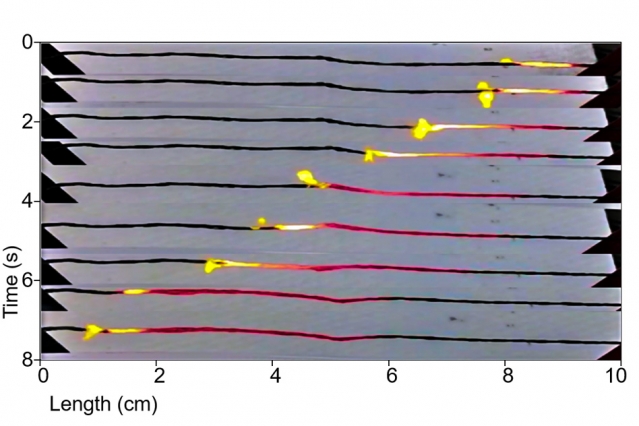Mary Grady’s report at AvWeb alerted your editor to this exciting development. Imagine a battery capable of seven times the energy output of any lithium battery now in existence, made of non-toxic, easily recycled materials. One aspect of this new energy source might give you pause, however. You have to set fire to the battery to extract all that energy. With recalls of so-called “hoverboards” and still warm memories of Tesla and 787 Dreamliner battery fires, folks might be excused for wanting to avoid anything that combines fires with batteries. The new approach, from MIT researchers, uses carbon nanotubes as its base, and these don’t self-ignite like their lithium cousins. Michael Strano, the Carbon P. Dubbs* Professor in Chemical Engineering at MIT found that coating a carbon nanotube with combustible material and lighting one end would produce a current as the fire progressed along the tube. Even though the amount of energy generated was low, Dr. Strano and his students …
Unzipped Nanotubes Show Energetic Promise
Rice University, supported by the Air Force Office of Scientific Research (AFOSR), has demonstrated “a way to boost the efficiency of the ubiquitous lithium ion (LI) battery by employing ribbons of graphene that start as carbon nanotubes.” The AFOSR explains, “Four years ago, [Rice chemist James] Tour’s research team demonstrated that they could chemically unzip cylindrical shaped carbon nanotubes into soluble graphene nanoribbons (GNR) without compromising the electronic properties of the graphitic structure. A recent paper by the Tour team, published in IEEE Spectrum and partially funded by AFOSR, showed that GNR can significantly increase the storage capacity of lithium ion (Li-ion) by combining graphene nanoribbons with tin oxide. “By producing GNR in bulk, a necessary requirement for making this a viable process, the Tour team mixes GNR and 10 nanometer wide particles of tin oxide to create a slurry. GNRs, a single atom thick and thousands of times longer than they are wide, not only separate and support the …
Vanadium Oxide/Lithium Batteries Offer Promise of High Power, Long Life
Henry Ford once brought a French metallurgist to Detroit, part of his plan to build cars with lighter, stronger steel. Vanadium, which the French used in their automobiles, offered him the chance to make the Model T lighter and stronger, and its part in the car’s alloyed steel gave the Model T the longevity which followed it through one of the longest production runs in history. Now battery researchers are looking at another quality of this mineral, its ability to form a superior cathode for batteries that “could supply both high energy density and significant power density. Combined with graphene, the wonder material du jour, vanadium oxide (VO2) could couple longevity echoing the Model T’s with charge and discharge rapidity similar to a supercapacitors. Materials scientist Pulickel Ajayan at Rice University created ribbons of vanadium oxide (VO2) thousands of times thinner than a sheet of paper, and combined those with atom-thick ribbons of graphene to form cathodes which were built …

